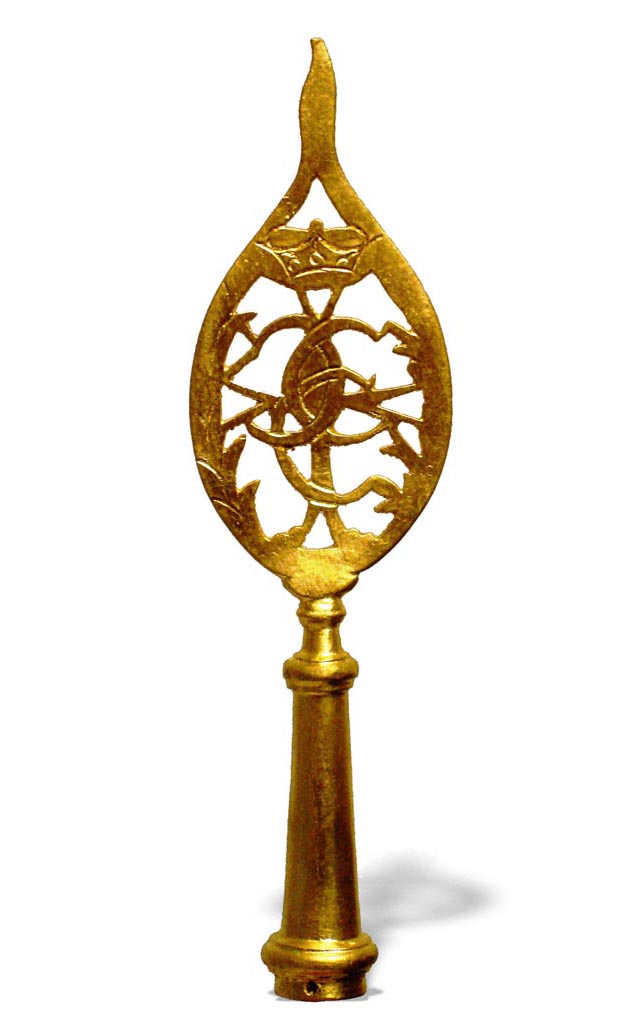.jpg)
Tempestuous dynasties. August the Strong versus Duke Christian
30 September 2017 to 21 January 2018
The Elector Friedrich August I of Saxony is well-known for his affairs with women, his castles and his ostentation. Less is known about his approach to religion and denominations.
In 1697, the appointed representative of the most significant and traditional Protestant dynasty and director of all Protestant German electors suddenly converted to Catholicism!
The change of faith brought the Elector the Polish crown, but this was simultaneously a venturous act: August risked losing his dominant position over the Protestant electors, jeopardised electoral dignity, destabilised internal peace and endangered the existence of previous alliances. Even some members of the elector’s family were unable to accept his conversion. His mother and his wife displayed opposition and a dispute ensued over the education and faith of the only son. Was this situation tenable?
In 1700, August agreed to relinquish the post of Imperial Protestant Director to his highest-ranking Protestant brother, Duke Johann Georg of Saxony-Weißenfels after having previously granted his Saxon subjects freedom in religious practice in 1697. As a consequence, the Weißenfels court developed into a “Protestant centre” of the Saxon electoral family, thereby elevating its significance but bringing the small district into a ruinous state.
Johann Georg however died unexpectedly in 1712 and his brother Christian ascended the throne, becoming “the third man” in the electoral state after the Elector and Electoral Prince. Christian resolved to exercise his regency in line with the Lutheran tradition of his ancestors. Customs such as the propagation of the Protestant faith were imperative; for him, a true sovereign of Saxony could only be a Protestant! This created a new problem for August: how should he react to his relative’s views?
Unlike the case with Johann Georg, the symbolic participation in power and clear signs of esteem did not emanate from Christian. His aim was to become independent and he had a mind of his own. This triggered off an acrimonious dispute between August the Strong and his cousin in Weißenfels. The pair could hardly have been more unlike one another: on one side, the imaginative, sophisticated go-getter, king, elector and sovereign and on the other side the orthodox down-to-earth prince ruling over a small principality who was essentially powerless and dependent on Dresden. Who would gain the upper hand?
Christian saw his governmental appointment as a gift of God and his mission and therefore spoke in favour of founding an independent Protestant court church. This building was constructed in Sangerhausen and Christian publically celebrated the implementation of his vow annually between 1713 and 1736 in this church, thereby placing himself clearly in opposition to the electors and their Catholic profession of faith. Christian of Weißenfels followed in the tradition of his Protestant electoral ancestors in the renovation of the castle churches and support for Protestant church parishes. His Lutheran creed was significantly underlined by the maintenance of court and ceremony, particularly in his high regard of sacred music.
Consequently, August and Christian grew even further apart. An ultimate rift developed between 1716 and 1719 due to the conversion and Catholic marriage of the electoral prince. Christian’s isolation only increased through his Protestant convictions and claim to power. In 1722, he was however able to implement a special project before the electoral prince: the erection of a gold-plated equestrian statue, representing Christian as a prudent and successful ruler of the state. You can still marvel at the remains of this impressive monument in the upper courtyard of Castle Neuenburg on the river Unstrut.
The exhibition “Dynastiegewitter” [Tempestuous dynasties] is a new exhibition focusing on a fascinating era in the history of belief in Saxony. Four rooms familiarise visitors with the actors and their activities. These four rooms were originally part of a single room – the magnificent royal dining chamber. This was where the prince and his family came together and individuals genuinely resided and acted in the courtly centre of society, politics and culture.
The prince’s church chamber has been opened to visitors for the first time. Unfortunately, only the foundations of the architecture have been preserved, but the location has retained its authenticity – from the year 1682, all dukes and duchesses of Weißenfels attended church services here. Enjoy the magnificent structure of the impressive ecclesiastical structure!
The permanent exhibition “Saxony-Weißenfels” in the former audience chamber and its antechambers offers a detailed portrait of the residence, the ducal family and culture at court. Numerous objects provide evidence of an uncommonly rich cultural development, giving a broad insight into a ducal family whose electoral self-confidence permeated all facets of the maintenance of the court. These finds are only a small part of evidence yet to be discovered!
.jpg)
.jpg)

.jpg)
.jpg)
.jpg)
The breathtaking church is an astounding synthesis of the arts. The church gained fame as one of the major Protestant regional churches. Church services were especially magnificent on an unbroken high level. This was where Handel’s talent was discovered at the organ of the church and Johann Sebastian Bach acted as Court Kapellmeister! The princes’ crypt containing 38 lavish royal coffins is situated below the chancel.